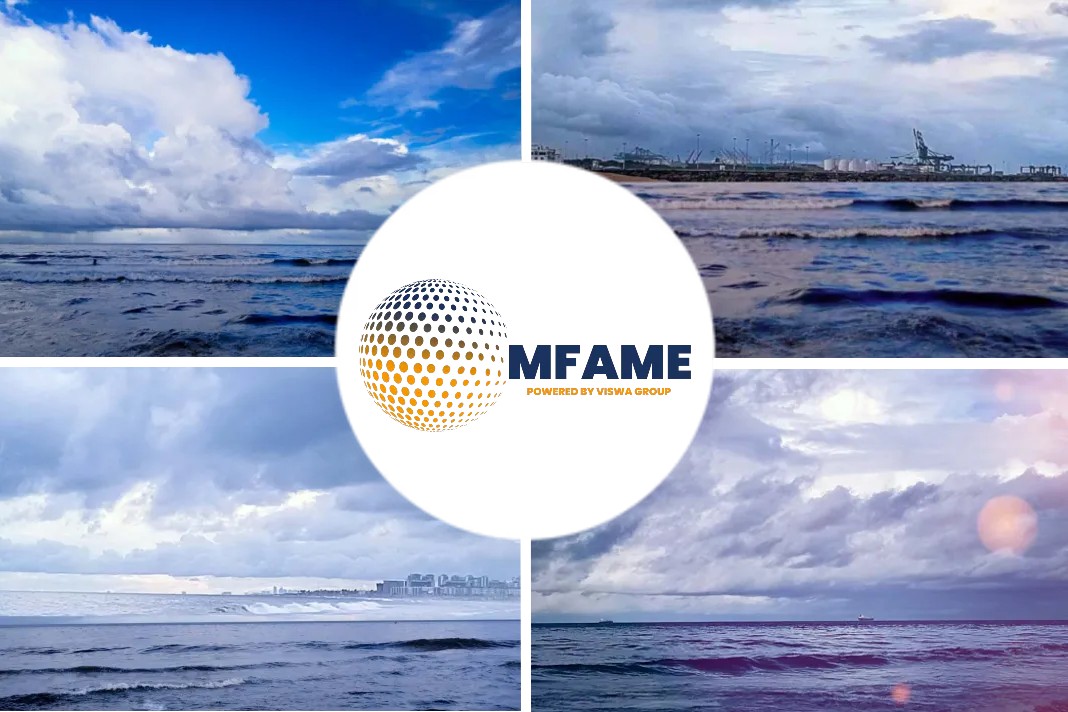Researchers can now predict the height and direction of incoming waves without relying on expensive, and occasionally unreliable equipments, reports Popular Mechanics.
Addressing the maritime woes
Cargo ships lost over 3,000 containers in 2020, and reportedly another 1,000 have already fallen overboard in 2021, according to the World Shipping Council. For comparison, the Council estimated an average annual loss of 779 containers between 2017 and 2019. The damage is inconvenient, but can also disrupt entire supply chains.
A team from the Norwegian University of Science and Technology (NTNU) might have a solution to these maritime woes. Using a few simple calculations, researchers can predict the height and direction of incoming waves without relying on expensive, and occasionally unreliable, wave radar equipment on the vessel itself.
Currently the team is testing their method on stationary ship models. But one day, it could help captains avoid disaster.
“If we know the waves, then we know everything we want,” says Zhengru Ren, postdoctoral fellow at NTNU. Waves hold crucial information about ocean variables, like the swell height and depth, which provide valuable insight to sea captains. In March, Ren and company published a paper in the journal Marine Structures detailing their new wave-analysis approach.
Wave buoy analogy
It involves a concept called the “wave buoy analogy,” which relies on a ship’s size, shape, and motion responses to the water to understand the overall sea state (including wave direction, height, and frequency).
This all hinges on the scientists’ ability to treat ships like buoys. The flotation markers sit on the ocean’s surface, moving in tandem with the sea itself—rising and falling with a wave’s peaks and troughs—so, the buoy’s movement (or the ship, in this case) is a proxy for the ocean’s movement.
Ren’s team has added in a new factor: the ship’s often asymmetrical geometry. The team can add that data into its pre-sail calculations, called “response amplitude operators” (RAOs). Ren says captains can easily plug those into a simple algebraic equation, along with a vessel’s motion, then use regression-based methods to solve for the wave spectrum. That’s a measurement detailing the sequence of waves in the sea, helping captains see into the ocean’s future behavior.
“We can do one linear equation, like in high school algebra,” says Ren. “It’s y = ax. For this, the ‘x’ is the wave spectrum. The ‘a’ depends on RAO. And ‘y’ is the vessel motion.” It’s a case of simple division to solve for the wave spectrum.
Accurate prediction of wave parameters
The wave-buoy analogy has existed since the 1980s, but Ren and colleagues found that the estimation technique wasn’t very precise. To solve this problem, they needed to smooth out the data with a concept called a Bézier surface, which is made up of Bézier curves.
These parametric curves smoothly connect points on a plane, much like the arc of a thrown baseball. Previous estimation methods relied on just three points to cover the peaks and valleys of an entire curve, but Ren’s method can use as many points as necessary. “The more nodes we consider, the more smooth the estimates will be,” he says.
In this way, the team could more accurately predict wave parameters, like height. As long as a captain knows their ship’s geometric specs, they can make these RAO calculations safely on land, as the ship is being designed or purchased, says Ren.
His tech will take the form of a software package like WAMIT or ShipX (which captains already use to calculate RAOs). It’s not ready to hit the seas yet, but Ren estimates it will debut within the next decade.
Technology for the stationary vessels
Because Ren’s team is still testing out the software on stationary ship models, for instance, the technology may be better suited to stationary vessels—like floating wind farms—in the short term.
It’s yet to be seen whether Ren’s method really will work on moving ships, explains Ulrik Dam Nielsen, an associate professor of marine technology at NTNU who was not involved in the work. “The research is truly novel, but whether or how the method will work in practice with real data and for ships having forward speed still remains unclear,” he says.
For his part, Ren is confident that the new method could elevate the sacred connection between a captain, their ship, and the sea.
“The field of marine technology is moving toward digitalization,” he says. “One hundred years ago, captains had no information about the sea state; they could only trust their eyes and experience…this [new] information can just help the captain make better decisions.”
Did you subscribe to our daily newsletter?
It’s Free! Click here to Subscribe!
Source: Popular Mechanics















